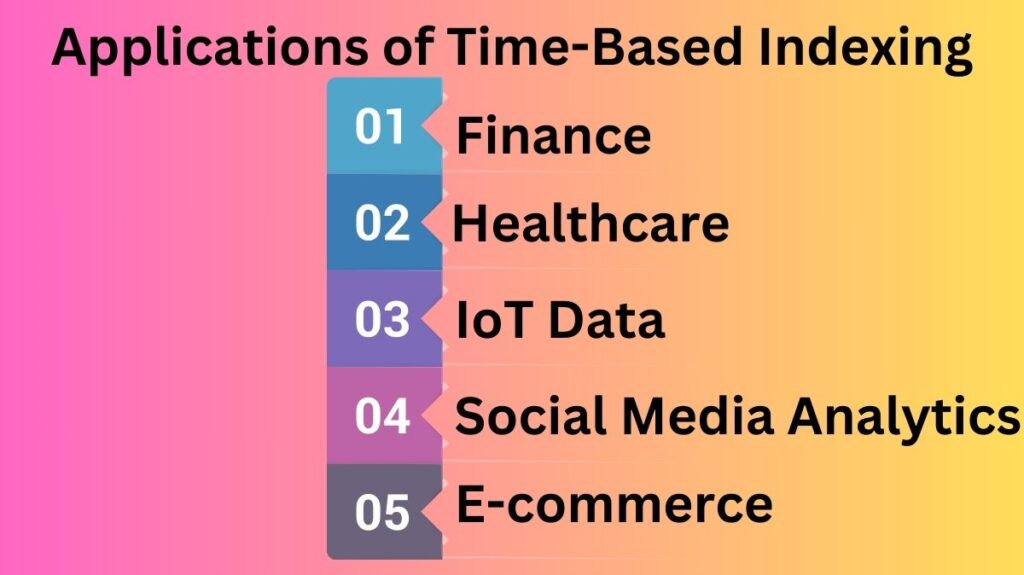Time-Based Indexing in Data Science
Introduction
In data science, time is crucial to identifying patterns, trends, and behaviors. Time-based indexing helps data scientists organize, analyze, and visualize data throughout time. Time-based indexing organizes time-series data like financial, sensor, social media, and healthcare records for useful insights.
This article discusses time-based indexing, its usefulness in data science, and its implementation. We will discuss its uses, problems, and best practices, with examples.
What is Time-Based Indexing?
Data science and database management employ time-based indexing to organize and retrieve data by timestamps or intervals. Assigning a time-based key or index to each data point simplifies querying, filtering, and analysis over time. Time-series data, such as daily stock prices, hourly weather data, or minute-level sensor measurements, benefits from this method.
Time-based indexing organizes data by timestamps. A dataset with daily sales records can be indexed by date. This lets you quickly retrieve sales data for a day, week, or month and perform time-based operations like calculating moving averages, finding trends, and discovering anomalies.
Time-based indexing is utilized in banking, healthcare, IoT, and social media analytics. It tracks stock prices and trade volumes in finance. It tracks patient vitals and treatment outcomes in healthcare. IoT monitors sensor data and optimizes processes. Social media platforms assess user involvement via time-based indexing.
Time-based indexing faces issues such inaccurate timestamps, time zone management, and scalability for huge datasets. Standardizing timestamps, choosing the correct granularity, and leveraging time-series databases are best practices.Time-based indexing helps data scientists find trends, predict, and act on time-dependent datasets.
Importance of Time-Based Indexing in Data Science
Time-based indexing is important in data science for many reasons:
1.Temporal Analysis
Time-based indexing helps uncover patterns, seasonality, and anomalies by analyzing data over time. Using sales data over time can help retailers pinpoint peak shopping seasons.
2.Effective Querying
Searching by time is faster and more efficient. Optimize queries to retrieve data for specified time spans instead than scanning the full dataset.
3.Align Data
Time-based indexing aligns data points in several datasets. Sensor fusion requires data synchronization from multiple sources, making this crucial.
4.Visualization
Time-based indexing simplifies time-series visualizations like line charts, heatmaps, and Gantt charts, which communicate insights.
5. Forecasting
Time-based indexing is essential for forecasting models like ARIMA, exponential smoothing, and machine learning techniques that use temporal data.
Applications of Time-Based Indexing
Time-based indexing is common in many fields. Notable uses include:

1.Finance
Financial analysts utilize time-based indexing to study stock prices, trade volumes, and economic indicators. It aids trend analysis, return calculation, and predictive modeling.
2.Healthcare
Time-based indexing tracks patient vitals, medication regimens, and treatment outcomes in healthcare. This allows longitudinal data analysis for better decision-making.
3.Sensor/IoT Data
IoT devices create massive time-series data. Time-based indexing monitors sensor readings, detects anomalies, and optimizes processes.
4.Social Media Analytics
Time-based indexing tracks user activity like posts, likes, and shares on social media. This aids user engagement and behavior analysis.
5.Retail/E-commerce
Time-based indexing helps retailers assess sales, inventory, and consumer activity. This aids demand forecasting and inventory management.
Problems with Time-Based Indexing
While time-based indexing has many benefits, it also has drawbacks:
1.Data Quality
Missing or inconsistent timestamps can affect indexing and analysis. Addressing these difficulties requires data cleansing and preparation.
2.Time Zones
Data management across time zones is difficult. Timestamps should be standardized to a single time zone for consistency.
3.Detail
Selecting the correct granularity (seconds, minutes, hours) is critical. Fine-grained indexing requires more storage, while coarse-grained indexing loses detail.
4.Scalability
Large amounts of time-series data can make indexing and searching computationally difficult. Large datasets require efficient data structures and algorithms.
5.Interval Variation
Time-based indexing might be difficult when data is recorded at irregular intervals.
Best Practices Of Time-Based Indexing
Consider these best practices to optimize time-based indexing’s benefits and mitigate its challenges:
- Standardize Timestamps
Keep timestamps constant in format and time zone. Convert time zones with Python packages like pytz. - Handle Missing Data
Depending on context, interpolate, impute, or remove missing or inconsistent timestamps. - Pick the Right Granularity
Choose a granularity that balances detail and storage. Consider hourly indexing for daily trends and minute-level indexing for real-time monitoring. - Efficiently structure data
Use InfluxDB, TimescaleDB, or Pandas for efficient indexing and querying. - Optimise Queries
Use B-trees or hash indexes to speed up time-based queries. Filter data by time range to avoid entire table scans. - Display Data
Explore and communicate insights with Matplotlib, Seaborn, or Plotly time-series visualization tools.
Conclusion
Time-based indexing is a key data science technique for organizing and analyzing temporal data. Data scientists can gain insights, refine queries, and construct strong forecasting models using this method. To enable accurate and efficient analysis, data quality, time zones, and scalability must be addressed.
Data scientists must grasp time-based indexing as time-series data grows. Follow best practices and use the correct tools to use time-based indexing to enable data-driven decision-making in your organization.
This article covers data science time-based indexing in detail. Understanding and using this technique will improve your temporal data analysis and insight extraction skills, regardless of your expertise.
